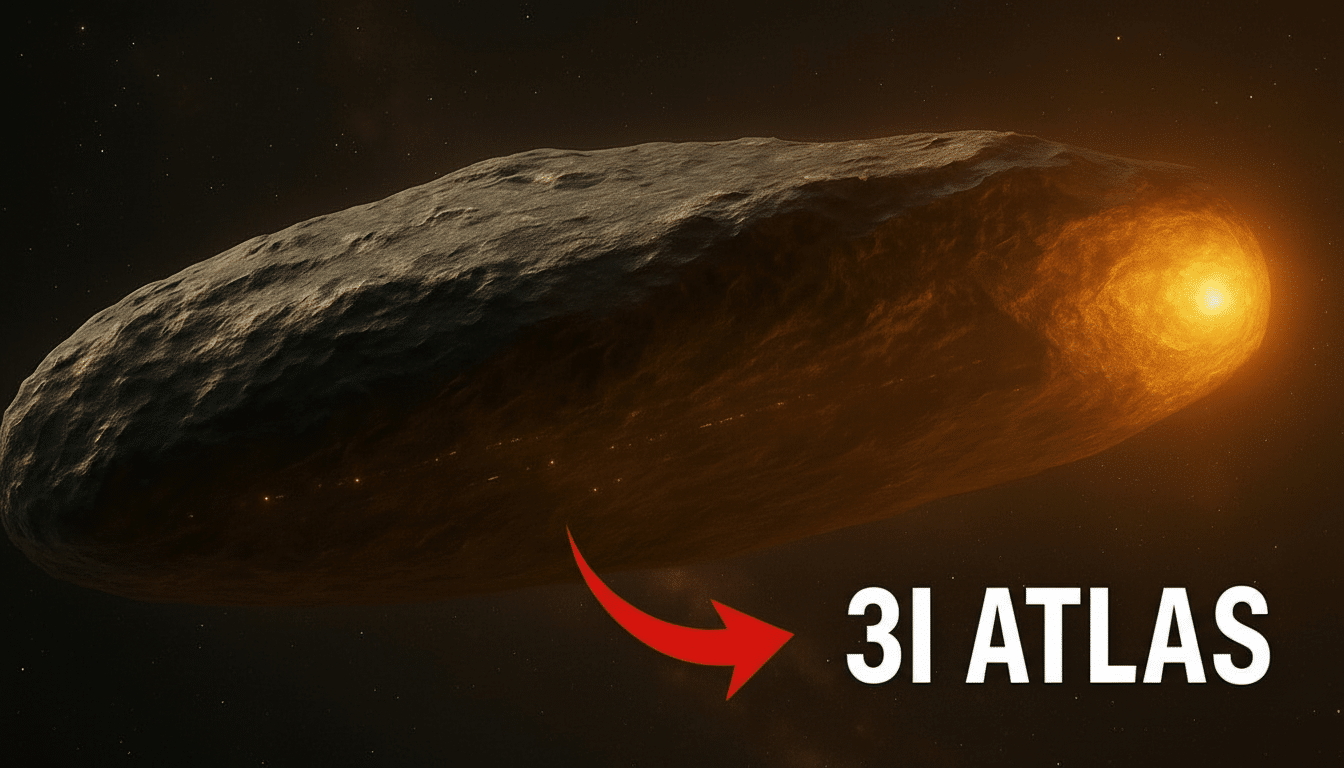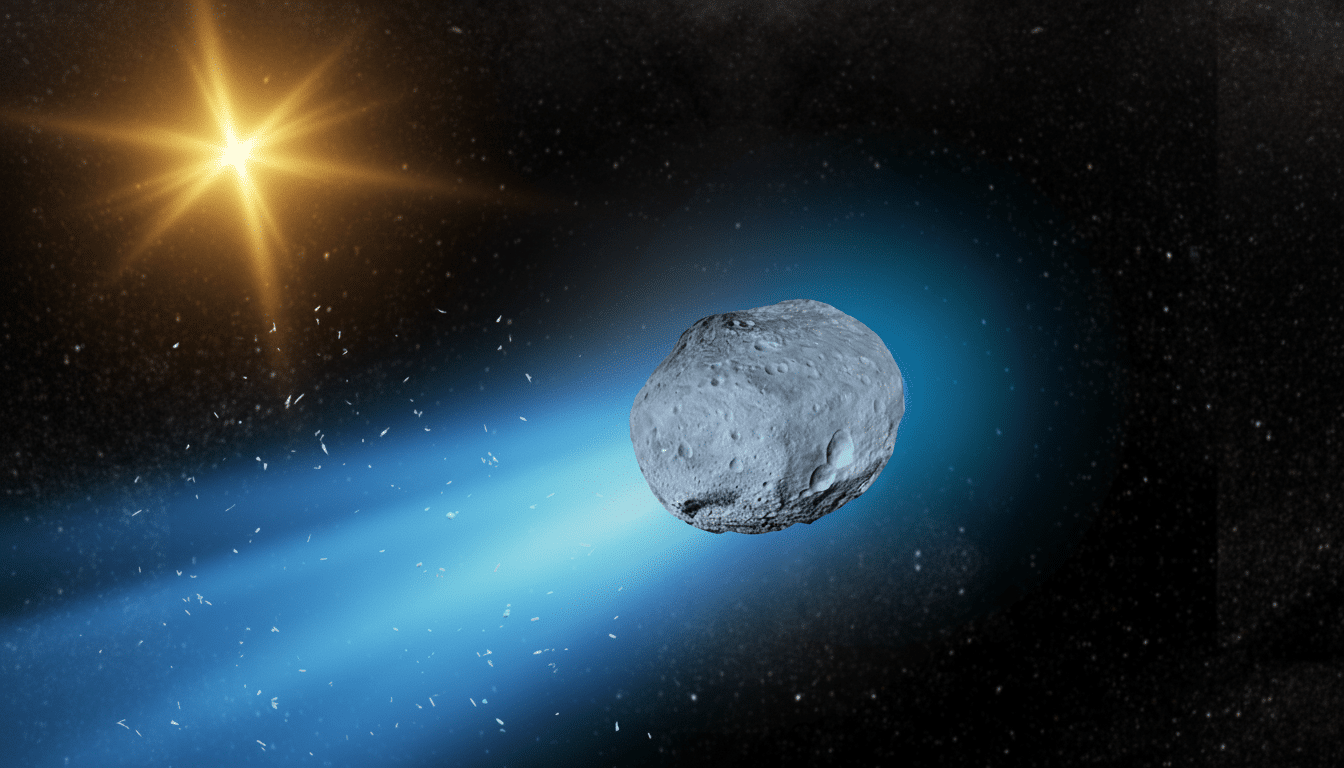An interstellar visitor just skirted past our inner solar system, and Mars had the best view. Orbiters from the European Space Agency at the Red Planet pointed their cameras at comet 3I/ATLAS as it passed by, offering a rare view of a cosmic wanderer that formed around another star and is hurtling out into deep space.
The comet came within a relatively close 19 million miles (about 31 million kilometers) of Mars — a near miss compared with human scales, but a plucky interplanetary flyby for something crossing the solar system at interstellar speeds. It is just the third known interstellar comet to visit our solar system, meaning this flyby is a rare opportunity for planetary scientists.

How the Mars Orbiters Got Shots of 3I/ATLAS
ESA’s ExoMars Trace Gas Orbiter and Mars Express also tried to image the comet on its flyby. Those spacecraft were designed to study Mars from fairly close range, not chase after faint pinpoints of light that travel at high speed. That rendered the observation a technical feat that called for carefully calibrated exposures and precise pointing.
ExoMars came through, capturing a pinpoint of starlight with an airy haze speeding across the cosmos in the background.
The more sensitive Mars Express observations were limited by shorter exposure times and are still being mined for evidence of a detectable signal. Mission teams have reported that the target was 10,000 to 100,000 times dimmer than what they’d normally take frames of — orders of magnitude fainter than sunlit terrain.
Nick Thomas, leader of the ExoMars camera team, said in a statement that the photo pushed the instrument beyond its capabilities, but it shows just how versatile Mars-orbiting instruments can be when such a rare deep-space event arises.
Three Ways 3I/ATLAS Is Definitely Interstellar
3I/ATLAS was first noticed by the Asteroid Terrestrial-impact Last Alert System, a survey that is funded by NASA and operated by the University of Hawai‘i. Its trajectory is clearly hyperbolic — a gravity-shunning signature that indicates it is not bound to the sun. At discovery, the object was traveling at around 137,000 miles per hour (almost 61 kilometers per second), too fast for it to be captured into a long-term orbit.
3I/ATLAS and interstellar comets in general share a common origin story: 3I/ATLAS’ brief gravitational interaction, likely with a giant planet in the comet’s home system, helped eject it into interstellar space. And after meandering around for cosmological eternities, it wandered out of its neighborhood — not unlike 1I/‘Oumuamua in 2017 and 2I/Borisov in 2019. Preliminary analyses suggest 3I/ATLAS bears dust consistent with that found in many comets near Earth, which strikes Farnocchia as possible evidence that the ingredients for forming planets could be fairly universal among solar systems.

What the Early Images from Mars Orbiters Reveal
The ExoMars images reveal a compact, bright core enclosed in a fuzzy coma — a cloud of gas and dust produced as sunlight heats a comet’s surface. Resolution of the nucleus was well beyond capabilities, and a conspicuous tail was not visible in these early frames. Modeling suggests that as the comet approaches the sun, outgassing and dust will increase enough for it to grow brighter by some two orders of magnitude, and that a tail should stretch over millions of kilometers.
Useful science comes even from low-resolution snapshots. Whether the coma brightens and expands with time is used by researchers to deduce dust grain sizes, production rates of material, and relative abundance of volatile ices. Those measurements, when combined with ground-based spectra, will allow scientists to compare 3I/ATLAS to native comets from the Kuiper Belt and the theorized belt of icy bodies known as the Oort Cloud.
A Traveler From a More Vintage Neighborhood
Initial dynamical investigations indicate that 3I/ATLAS may have come from an older generation of stars in the Milky Way, which could mean that the comet is itself more than 7 billion years old — an age greater than our entire solar system. If such an object were confirmed, it would be a time capsule from a period when the chemistry and dust environment in the galaxy was much different than its current state.
What Happens Next as 3I/ATLAS Leaves the Inner Solar System
There is no danger to the planet. The comet will make its closest approach to our planet on the far side of the sun, at about 170 million miles (about 270 million kilometers). From Mars, however, the geometry was good enough to try some imaging — and to see what it is like when planetary orbiters adjust their focus elsewhere in space for a look at transient interstellar visitors.
As 3I/ATLAS emerges from solar glare and becomes more active, ESA’s Jupiter Icy Moons Explorer (Juice) will seek to conduct complementary studies, and large ground-based telescopes are ready to monitor the developing coma and tail. Along with those established by ‘Oumuamua and Borisov, these measurements will improve models of how other planetary systems produce and expel comets.
Heading into the future, ESA’s Comet Interceptor, which is built to rendezvous with a previously unvisited comet with short lead time, might eventually welcome the next interstellar guest with a bespoke flyby. For now at least, 3I/ATLAS is giving Mars-orbiting craft a rare, precious peek at the stuff of other suns as it races back into the dark.

